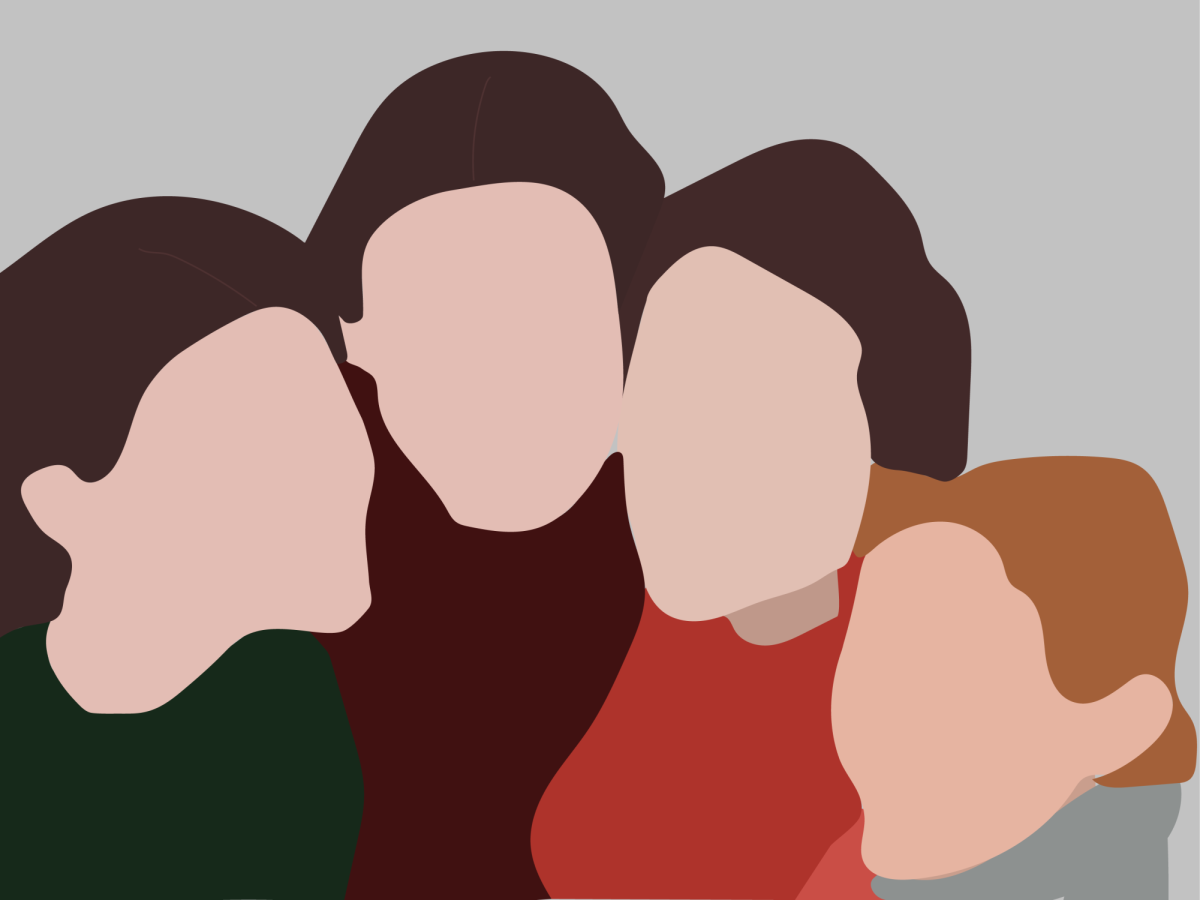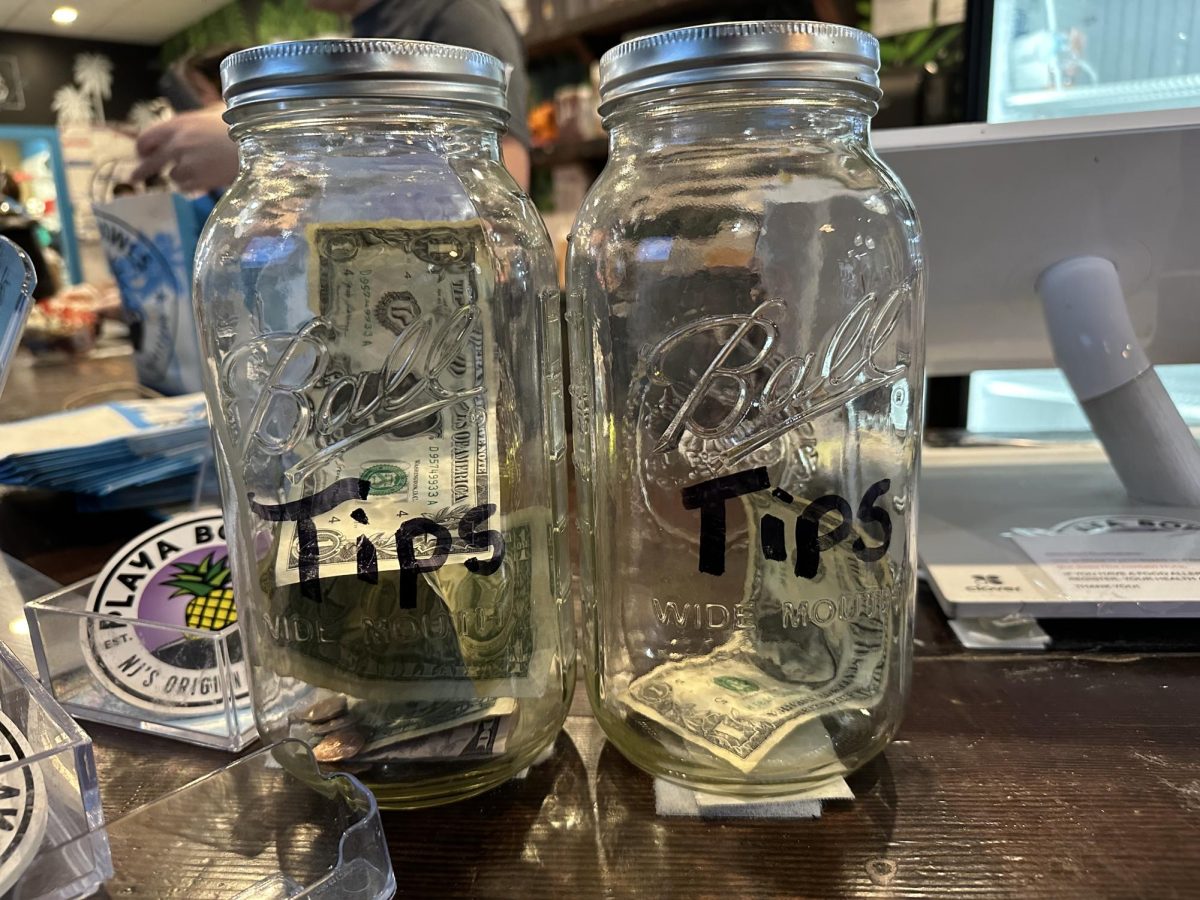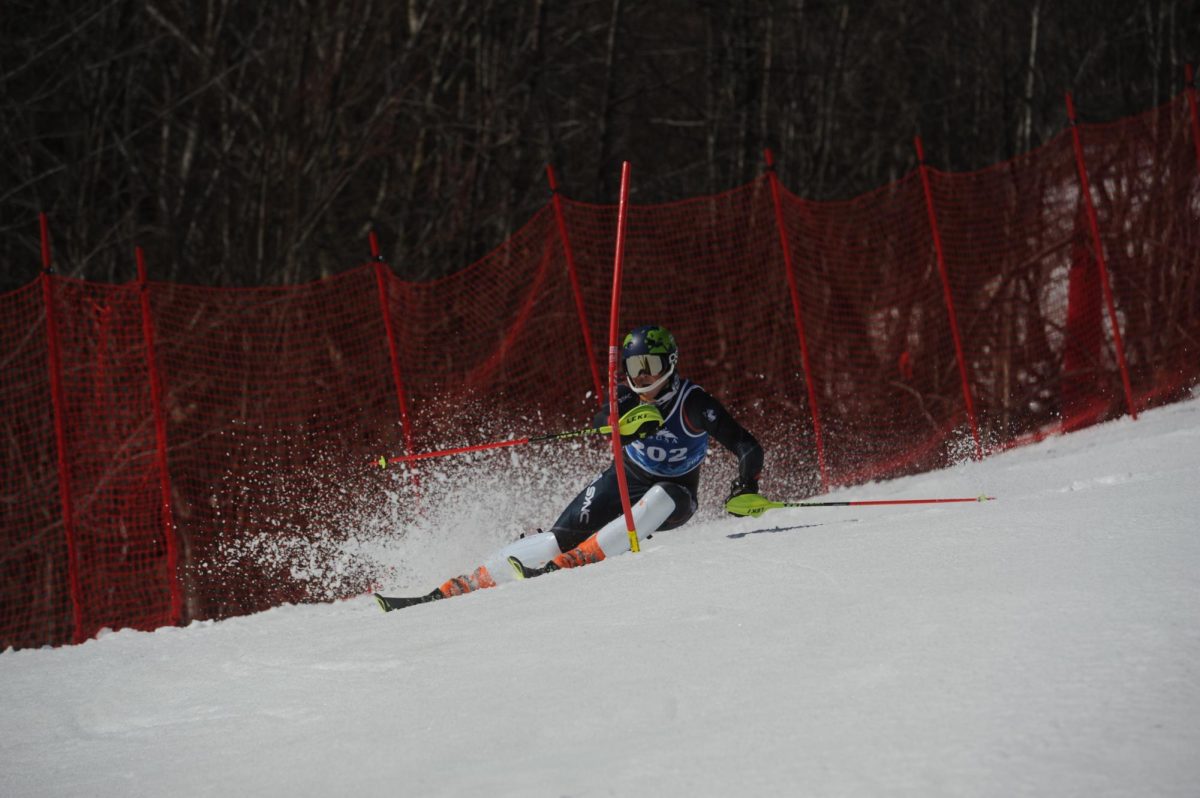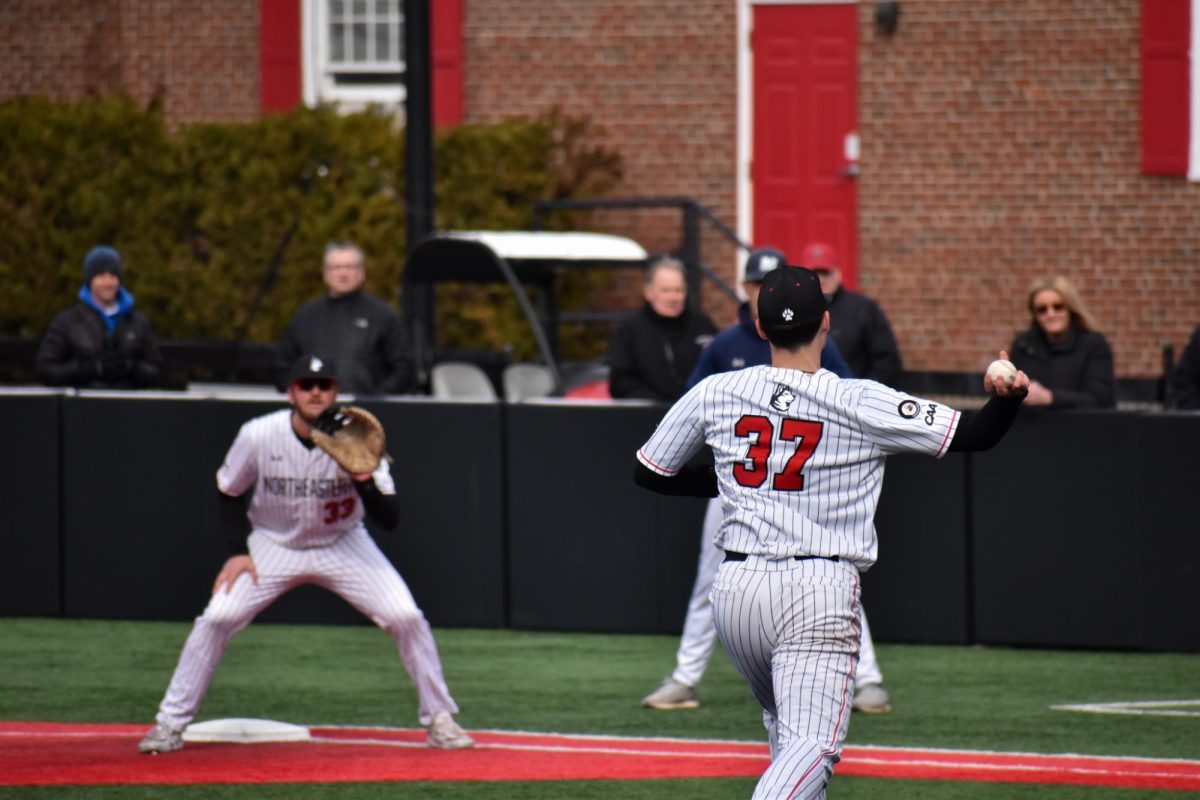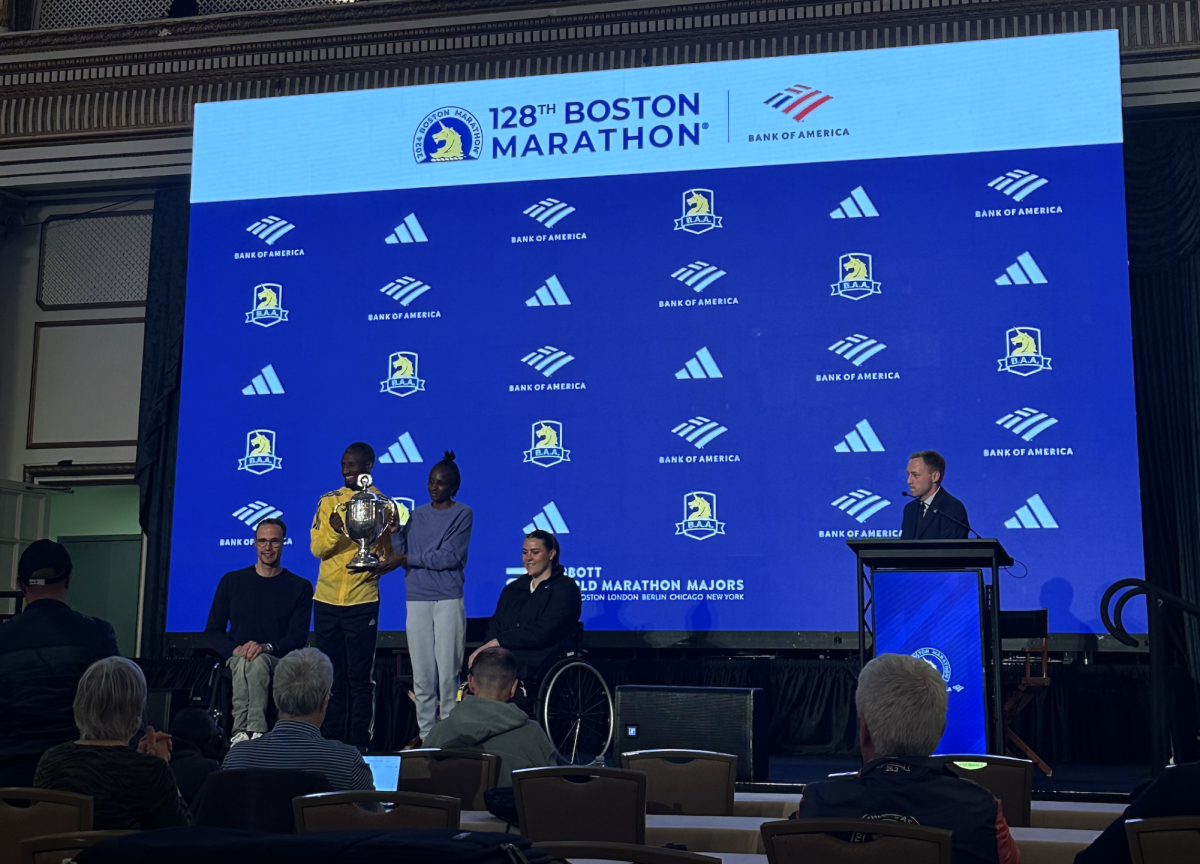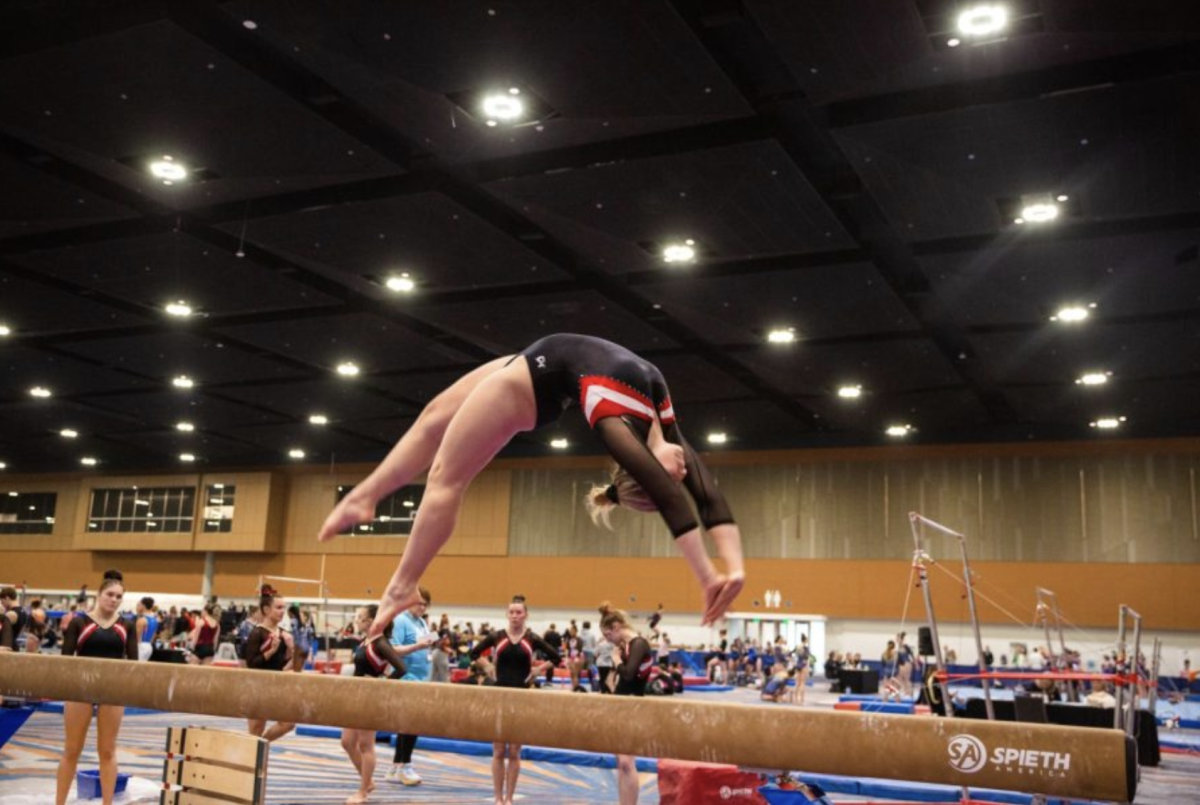By Connor McGann, News Correspondent
A few days after a win against University of Rhode Island in mid-September 2011, the women’s soccer team was preparing for the conference season to begin. It was supposed to be a day of rest for the Huskies, but the team held a movement session at Cabot Center. Freshman center-back Bianca Calderone, who had recently started her first four collegiate games, marked a teammate. The painful series of events that followed were transformative for the Wellesley-born lifelong soccer player.
That Monday two years ago at practice, her mark went one direction then cut the other way. As Calderone reacted, her anterior cruciate ligament (ACL) in her left knee tore. She wouldn’t start another game until the 2013 season.
“I just remember completely freaking out and having a panic attack and even the girls remember me screaming on the ground,” she said sitting in the Cabot athlete’s lounge, close to where her ligament injury occurred two years before, “I knew something was wrong when it happened and so then I went through all the MRI and all that testing and later that night I found out, it was just, you can’t even really describe it, it was a heartbreaker.”
Calderone was born into a soccer family. Her grandfather played professionally in the Italian Serie B before coming to America, and her extended family plays the game as well.
“My dad didn’t [play] but he got more into it, like when we started getting into it, but my mom played for my grandpa with a bunch of guys,” she said with a laugh.
In her early years as a player, she was an attacker, like her proud grandfather. Though she sometimes misses bringing the ball forward, she appreciates the responsibility of being a defender, the final barrier between the opposition and the goalkeeper. At age 12 when she joined a club team, her coach put her at left-back and it was there that she began to learn the subtleties of playing defense, including tackling, which she particularly enjoys. Though admittedly shy, Calderone has developed into an ever-present vocal leader on the field, shouting directions all over the pitch to Burnett and the other defenders.
But she didn’t always have the opportunity to lead. Through the 2011 and 2012 season, Calderone didn’t get nearly as much playing time as she would have liked due to her long recovery.
“Shes really only played a half a season,” head coach Tracy Leone said, following a loss to the University of Maine in September, “She played some last season, but she was getting her way back, so that was kinda time that was stolen from her on her comeback from her ACL injury.”
The loss came as one of many in a rough 0-6-3 season start, which team members said wasn’t an accurate representation of their play on the field. One of the team’s bright spots, shadowed by their August and September results, was the back line in which Calderone, now a junior, has started every game this year.
“She’s playing like just a great experienced leader back there. I thought she was the class tonight, I really did,” Leone said.
Getting to that point, though, took two difficult years of frustration, including spending the entire 2012 season coming off the bench in an uncomfortable knee brace.
“I just remember being in the cafeteria and I was just like bawling my eyes out,” Calderone said in reference to the night she found out the severity of her injury, “I got the call from our doctor and just like fell apart.”
Her ACL surgery was scheduled for October, a couple weeks after the tear, but had to be delayed after the doctors found swelling in her right knee, which required a separate surgery to find the source. Her right knee was drained of fluid in October, and the ACL repair was pushed back to November. Thus began a long recovery process that eventually ended before the beginning of the 2013 season, when Calderone finally began running without a knee brace. From September 2011 until August 2012, Calderone slowly worked her knee back to full strength.
In the summer of 2013 she was cleared to run without her brace, and the recovery came just in time as she has proved to be a strong defensive presence on the young team. Conference play for the 2013 season began in October and with it came a burst of energy and long-awaited turn in fortune. The Huskies tore through the start of conference play with three shutouts in four straight wins before a 2-0 loss to the University of Delaware on Oct. 13. They finished conference play 5-2-1. Burnett and the defense allowed seven goals in eight games as the team finished third in the Colonial Athletic Association.
“It’s hard holding a team to a shutout,” Calderone said, “So I think you don’t always get credit for it, but you’re kinda the last line so it is really difficult to hold out teams especially some of the top teams that we’re playing now in our conference that have good offensive lines, just like its hard to hold off our offensive line for a whole game.”
After a draw with Delaware in the quarterfinals, Calderone and her team will travel to Virginia to play William & Mary on Nov. 8. Calderone’s confidence on the field was apparent as she calmly explained how she believes good things will come in the looming CAA semifinal match.
In the lounge, peppered with a few of Calderone’s teammates relaxing following a lighter-than-usual practice, she explained, “We just recently played [William & Mary] and we had a really good game. We were just sort of unfortunate in how we were unable to capitalize on our chances, which I think we have been practicing, so I think it’ll be good this time around because we have the confidence, we know how we play against them and I’m actually really looking forward to it cause I think we have more than a good chance of getting through here.”
Confidence was something that was hard to come by when Calderone returned to soccer for the 2012 season. She was cleared to play the day before her sophomore season started but never quite played the same as she did the previous year.
“I was slower, I was not as quick,” she said, “I knew what I wanted to do but I couldn’t like physically do it. So that season was tough because I knew I wanted to play but I knew I wasn’t ready.”
After almost a year of rehab, Calderone still wasn’t quite herself. She had physical therapy sessions both at the Cabot Center and Massachusetts General Hospital and saw recovery as a new goal to work toward with soccer temporarily out of her life.
She began the process by working on her quadriceps with workouts such as straight leg raises. Once her quadriceps were functioning properly again, she moved on to the weight room where she began strengthening her leg until the point when she could complete a one legged squat — the sign that she was ready to start running again.
Running in that dreaded knee brace. And so she spent that entire 2012 season, after all the hours in therapy, in a knee brace, not quite the player she once was, and not getting the playing time she desired.
She spent nearly a year, from August 2012 until the following summer, playing soccer with her knee movement restricted by the support required to prevent any further damage. After she lost the prohibitive brace, she made sure that there would be no more physical setbacks in the 2013 season. Calderone trained frequently in addition to a stint at the Boston Breakers Academy Program, the training academy of the Somerville-based National Women’s Soccer League team. The weight of the brace and the struggle of the ACL tear now behind her, Calderone has developed into a leader on a team that, since October began, has unexpectedly ripped through the opposition on their way to Friday’s semifinals berth against William & Mary.
And hHer story has been not only an impressive struggle from the depths of injury, but a motivational tool for the patients Calderone works with at Sports and Physical Therapy Associates on Huntington Avenue, where she is currently on co-op. Though she wanted to be a physical therapy major before her injury, the rehabilitation she went through solidified her desire to enter the field and help others through injury like her trainers helped her.
“It’s actually really cool, since co-op, six months, there are some patients that I get to witness go through the whole thing,” she said, “I’ve been there so I know, like, what to say to them, and at the same time you know that nothing can really, you can’t really say much to help someone going through it.”
She has a variety of responsibilities at her co-op. At any moment she can be found massaging a patient, helping someone through his or her exercises or putting an injured limb on ice or heat. It helps to know exactly what is wrong with a patient, and what they will need to go through in order to have the sort of full recovery that Calderone eventually had.
“I think that no matter how much you tell a person or show them like, look it got through it it’s kind of a devastating injury,” she said “You’re out from six to nine months, so no matter how much someone tells you you’re gonna be fine it never really helps. I think it’s more of just, it’s good to have people there to keep you upbeat. But essentially a lot of it is, you kinda have to be mentally tough to get through it.”
Her ACL injury, and her first major bout of rehab, helped her realize that physical therapy is what she wants to do. With three years left until graduation in a six year program she knows this is where she wants to be. And the skills she has learned as a leader on her team have begun to translate over to her work at Sports and Physical Therapy Associates. The relationships she must build in soccer in order to succeed have helped her in building relationships with the patients she works with.
“With physical therapy, it’s more of just really getting to know your patient and being social with them,” she said, “I’m becoming more of a vocal leader and I’ve kinda been out of my shell a lot now. So thats kinda transferred over because I just remember growing up I was always the shy girl so, like, now being leader on the team, I’m still shy but I would say I’ve kind of put myself out there a little bit more. Which helps in physical therapy when you’re trying to work with someone, you wanna be as friendly as you can.”
When she graduates, Calderone will have a doctorate degree. She’ll be able to get a full-time job as a physical therapist, although she couldn’t resist a professional offer if she came across one.
“Once I went through my ACL and did all the rehab for that,” she said, “I really knew that I wanted to do physical therapy so it kinda was a blessing in disguise, I guess.”




